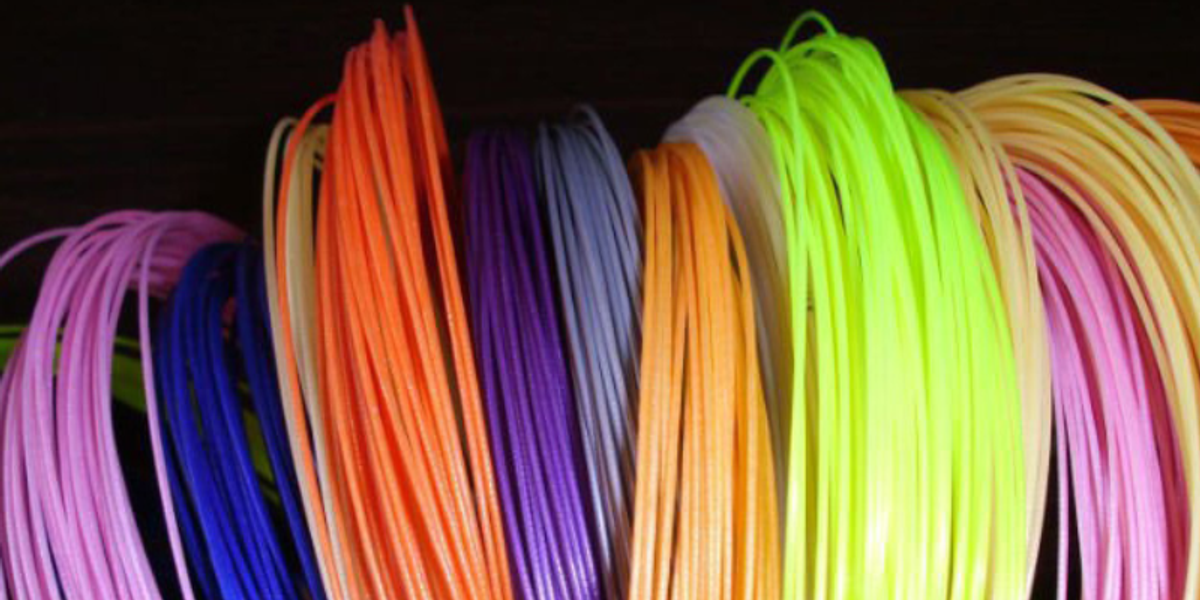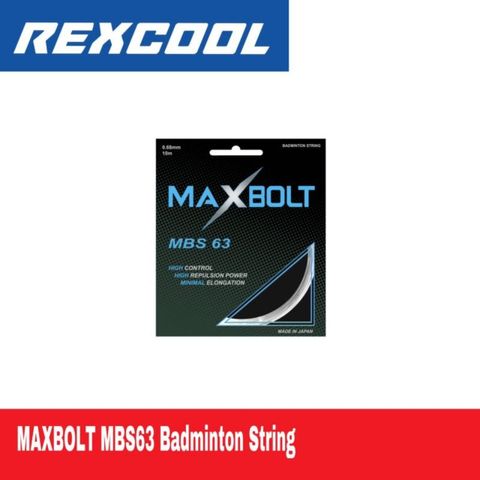
Before you choose a badminton string, here are some basic facts and terminology you should familiarize yourself with:
All strings stretch, like elastic, and therefore your strings will begin to lose tension (known as "tension creep") starting from the day it is strung.
Every racket has a “sweet spot.” This is an area on the string bed which will give you the most power.
Beginners lack the technique and is more likely to mis-hit the shuttle on the wrong part of the string bed, therefore it is recommended that they use a lower tension because the lower tension creates a bigger sweet spot.
A higher tension will provide more power and control only if you can consistently hit the sweet spot. The downside is that the strings will break more easily if a mis-hit occurs because of how tight the strings are being stretched.
As a player becomes more consistent and has good technique, they will benefit more from a higher tension because the shuttle will travel off the string bed faster, giving them control of the shuttle.
String tension relating to power and control
Much of the power in a badminton shot comes from the string. Thus, it is very important to know how string tension can affect your game. By adjusting the string tension, you can adjust the amount of power or control that you get from any string, thick or thin.
Playing with a lower tension (18-23lb)
A lower tension means:
-a softer (looser) string bed and thus less feeling of the shuttle which results in less control and placement
-a softer (looser) string bed means that there is more "bounce/repulsion" from the strings and therefore the player can easily get power even if they lack the proper technique or strength
-a larger sweet spot that is more forgiving and less prone to breakage from miss hits (more durable)
Conclusion: Lower tensions are more suited for beginners who do not have good hitting technique and require more power in their game.
Playing with a higher tension (24-30lb)
A higher tension means:
-a harder (tighter) string bed and thus more feeling of the shuttle which allows for more control and placement
-a harder (tighter) string bed means that there is less "bounce/repulsion" from the strings and therefore the player needs to have proper technique to generate power
-a smaller sweet spot that is less forgiving and more prone to breakage from miss hits (less durable)
Conclusion: Higher tensions are more suited for advanced players who have good hitting technique and require more control in their game.
Benefits of Thicker And Thinner Badminton Strings
As you can imagine, different string gauges have different characteristics. Below we will discuss some of the benefits of thicker and thinner strings. Please keep in mind, we need to separate the idea of string tension and string gauge. Below are the advantages of thick/thin strings purely based on all factors being equal, eg skill level, tension, racket etc.
Advantages of Thicker Strings
1. Greater Durability – This is the main advantage most people think of when choosing thicker badminton strings. As you hit the shuttle, the strings dig into each other. This is like a battering ram. Eventually, the strings will cut through each other and the string will break. Therefore, a thicker string is more resistant.
2. Move Forgiving – When you mishit a shot, (ie not on the sweet spot) a thicker string is less likely to break. When the shuttle strikes the string bed, the sweet spot evenly absorbs the force of the shuttle. You might notice that if you mishit the shuttle right at the top of the racket, the strings are much more likely to snap. This is because the tension around the edges of the racket is a little higher and the force of the shuttlecock is focused in one area, rather than spread evenly. This causes over-stretching of the string. A thicker string is better able to absorb this impact simply because there’s more of it vs a thinner string.
3. Holds Tension Better – Thicker strings do not tend to stretch as much as thinner strings and consequently holds tension better. This is linked to durability in that the desired tension when initially strung is maintained for a longer period, therefore maintaining consistent performance over time.
4. Greater Control – In general, a thicker string will not flex as much as a thinner one. The shuttle will spend less time on the string bed than with thinner strings. This means a thicker gauge string may feel at a higher tension relatively, even though they are strung at the same tension overall.
Advantages Of A Thinner String
1. More Power – Thinner strings generally have greater repulsion properties. When the shuttle hits the strings, they stretch and propel the shuttle forward. You can think of it somewhat like a trampoline effect.
2. Sound Better – Although this is more of a novel advantage, who doesn’t like hitting a smash that sounds like a gunshot just went off from their racket?!
Why the Professionals Use Thin Badminton Strings?
With so many advantages of thicker gauges, why do the professionals prefer thinner strings?
Well, first of all, they don’t have to worry about breakages as their rackets are restrung by their sponsors for free. But more than that, they are so skilled that thinner strings at higher tensions actually result in optimal performance for them. They are able to produce great power through technique alone, and they have an excellent feel of the shuttle. Higher tensions also allow them greater control over the shuttle which gives them the advantage of both increased power, (through the thinner strings) and increased control
(through the higher tension.). Therefore the advantages we perceive for having thicker strings are negligible to professionals.
String feeling (SOFT , MEDIUM , HARD)
Different strings from different brands all feel very different, it’s hard to find two strings that ever feel like another. Yonex uses a classification of soft, medium and hard feeling strings and the best way to describe it is this; soft strings tend to feel more bouncy and stretchy, they feel like they stretch easier and hard strings feel very solid and rigid without bending much.
Soft strings are better for players who need easier repulsion and power in shots without exerting as much effort into the racquet. Doubles players tend to lean towards strings on the medium to soft side for strings because rallies can be very thick and fast and need to generate more power from shorter movements with the racquet whereas singles players quite like using the harder strings as they have more time between shots to prepare and can get the most out of the smashes where they try to win the rally outright. Soft strings have a downside because they stretch easier under force it means that they don’t hold the tension when restrung as well as harder strings, if not replaced regularly they will slacken naturally.
Hard feeling strings give a good sense of the contact with the shuttle, they feel less bouncy and stiffer so you can feel the shuttles impact a little more through the racquet which provides good feedback for softer touch shots where you need to be very accurate. When hitting harder shots they provide great repulsion with enough force replied but without they can feel very difficult to get much out of, it can feel like hitting with a wooden bat or something. These strings are definitely not the best for beginners when beginners should be focussing on consistent returning of the shuttle before trying to hone accuracy and power.
Related products

MAXBOLT MBS63 Badminton String

YONEX Exbolt 63 Badminton String

